
The most exciting time of year for anyone who has a fruit tree is the period when harvest time rolls around. We have an orchard with a variety of different apple trees, plum trees, sour cherry trees, damsons and mulberries.
Late summer through fall is a busy time. Some years we have a higher yield than others. But whether it has been a good year or a bad one for our fruits, there is still a lot of work to do.
Here on our homestead, we aim to reduce our consumption as much as possible. But there are certain pieces of equipment that we would find it very difficult to be without when harvesting, processing and preserving our fruit and when caring for our trees.
But before we go on to discuss the twelve pieces of equipment that everyone with a fruit tree needs, let’s take a moment to think about the things that are necessary for fruit tree growing that you do not need to buy.
What Not To Buy For Your Fruit Tree
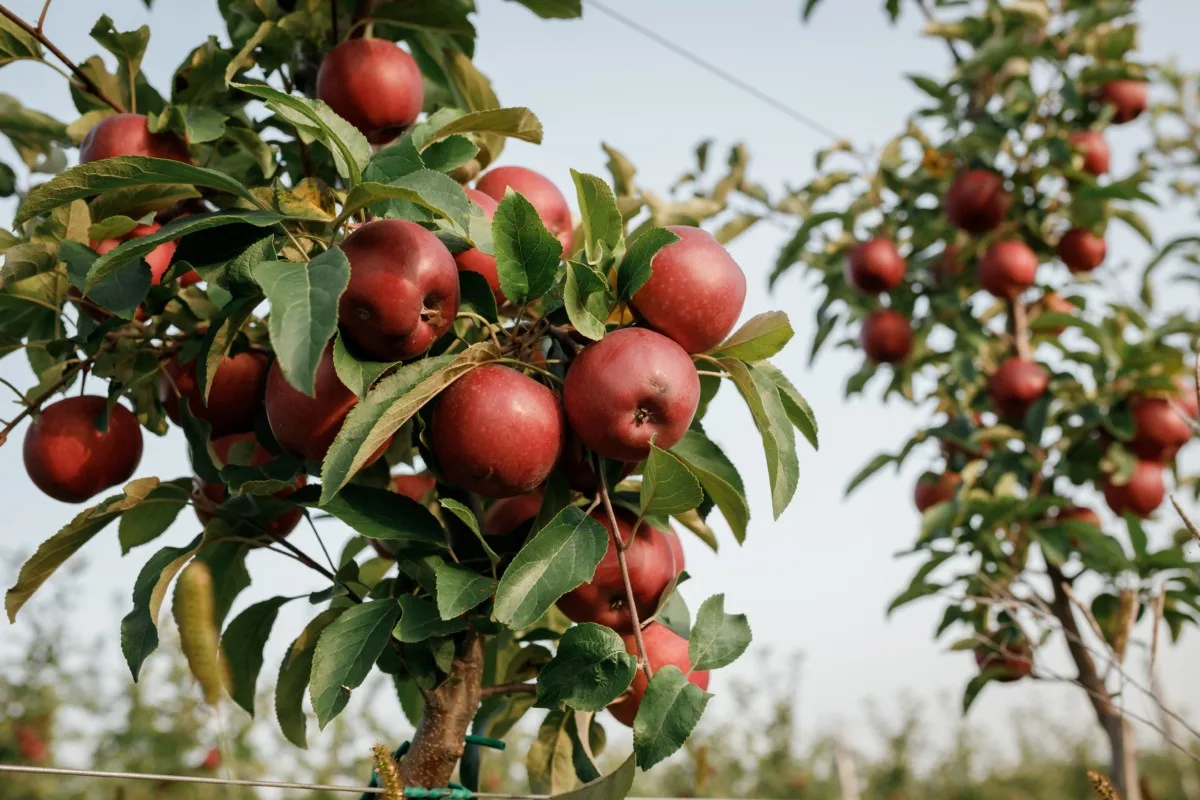
These are things that nature, and your garden, can often provide:
- Compost – (Make your own from household scraps and other organic matter.)
- Mulches – (Use homemade compost, leaf mold, chopped and dropped comfrey, and other organic matter from around your garden or homestead.)
- Organic liquid feeds – (Give fruit trees a boost with your own homemade comfrey liquid feed, nettle liquid feed, or other homemade potions.)
- Stakes for saplings/ young trees – (Consider using long, straight branches pruned or foraged from elsewhere on your property or the surrounding area.)
Not exactly a piece of equipment, but one thing to mention in regard to planting new fruit trees: I would highly recommend adding mycorrhizal fungi in the planting hole at the time of planting. This will help to develop the necessary soil ecosystem to promote healthy fruit trees/ forest gardens.
Now, without further ado, let’s take a look at the pieces of equipment that no fruit tree owner should be without:
Tools For Harvesting Fruit
We could not do everything that we do here without certain pieces of equipment that save a lot of time and effort during the fruit tree harvest and make it possible for us to reach and collect all the fruit.
1. Wicker Baskets
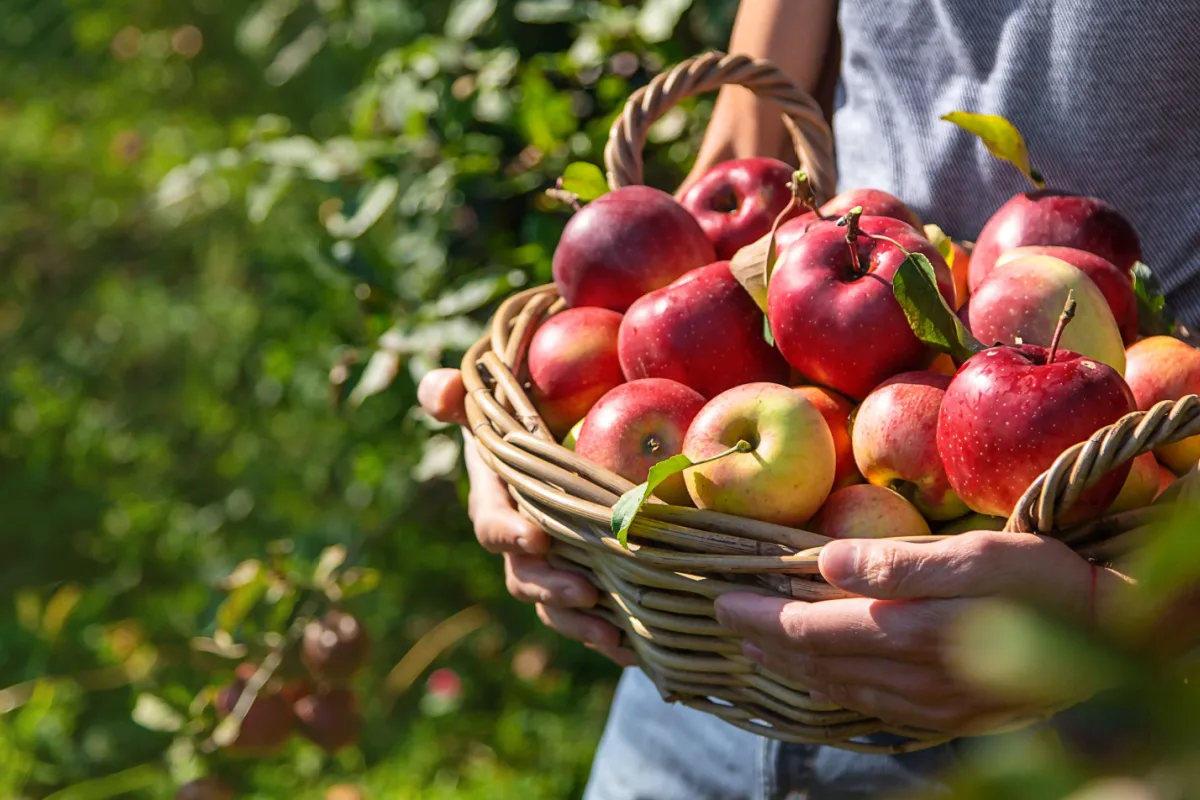
This super simple piece of equipment is something that I use on my homestead literally every day. I use it to gather a wide range of harvests – from the vegetable plots, the polytunnel and the orchard – and also to collect the chickens’ eggs.
Of course, there are plenty of simple receptacles that you could use to bring in your fruit harvests, but a wicker basket that can be slung on one arm is a tried and tested and eco-friendly option that really is hard to beat. If you have the skills and time, you might even be able to make your own or source a vintage wicker basket online. Another similar option is a traditional wooden trug.
2. Fruit Picker
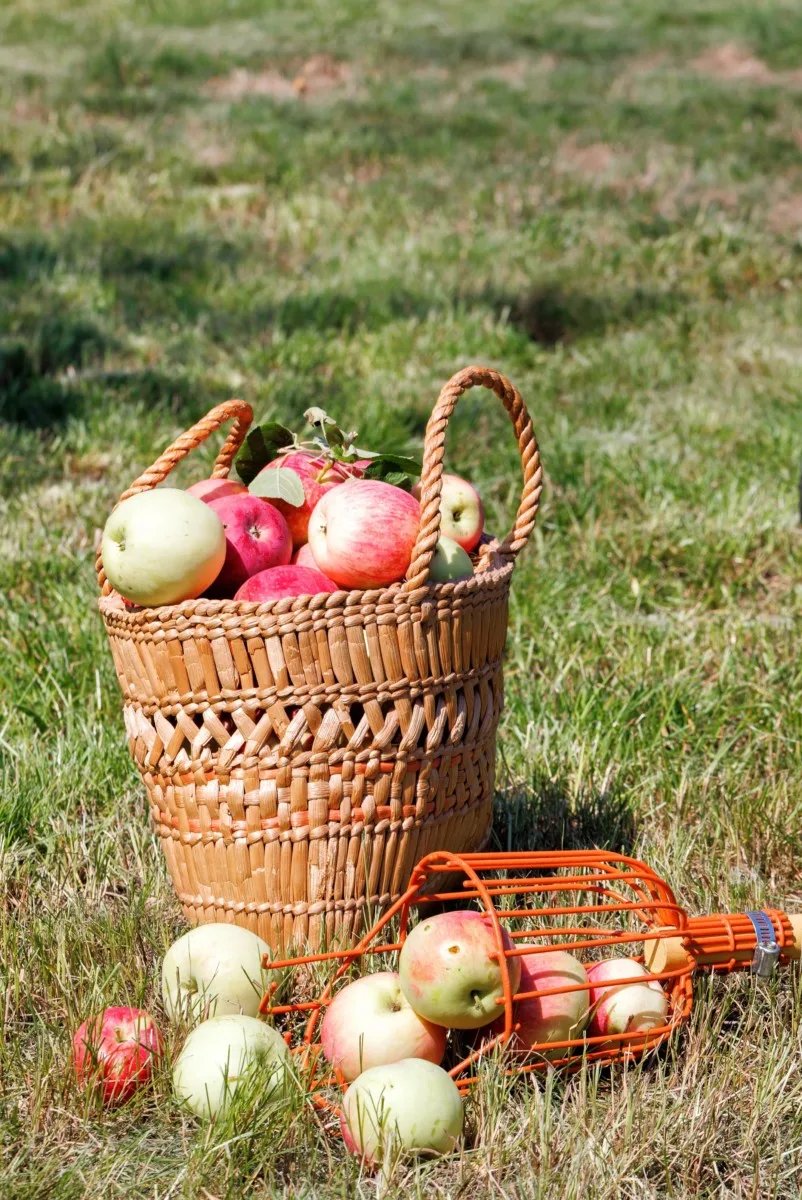
Another piece of fruit-picking equipment that I would highly recommend purchasing is a fruit picker basket.
This can be attached to the end of a long wooden pole and is ideal for picking fruit from mature standard trees. The ability to attach the basket to a wooden pole is great, as this will allow you to avoid the more environmentally damaging plastic and metal poled options.
If your trees are very large, however, you can also consider buying an extendable fruit picker with a basket that is already attached to a lightweight, extendable pole to reach up to fruits at 30ft or so.
3. Step Ladder
Another extremely useful piece of equipment when you have a large fruit tree is a step ladder. Unless you have a good head for heights and perfect balance, a step ladder with guard rails and wide, non-slip treads like the one in the link above is a very good idea.
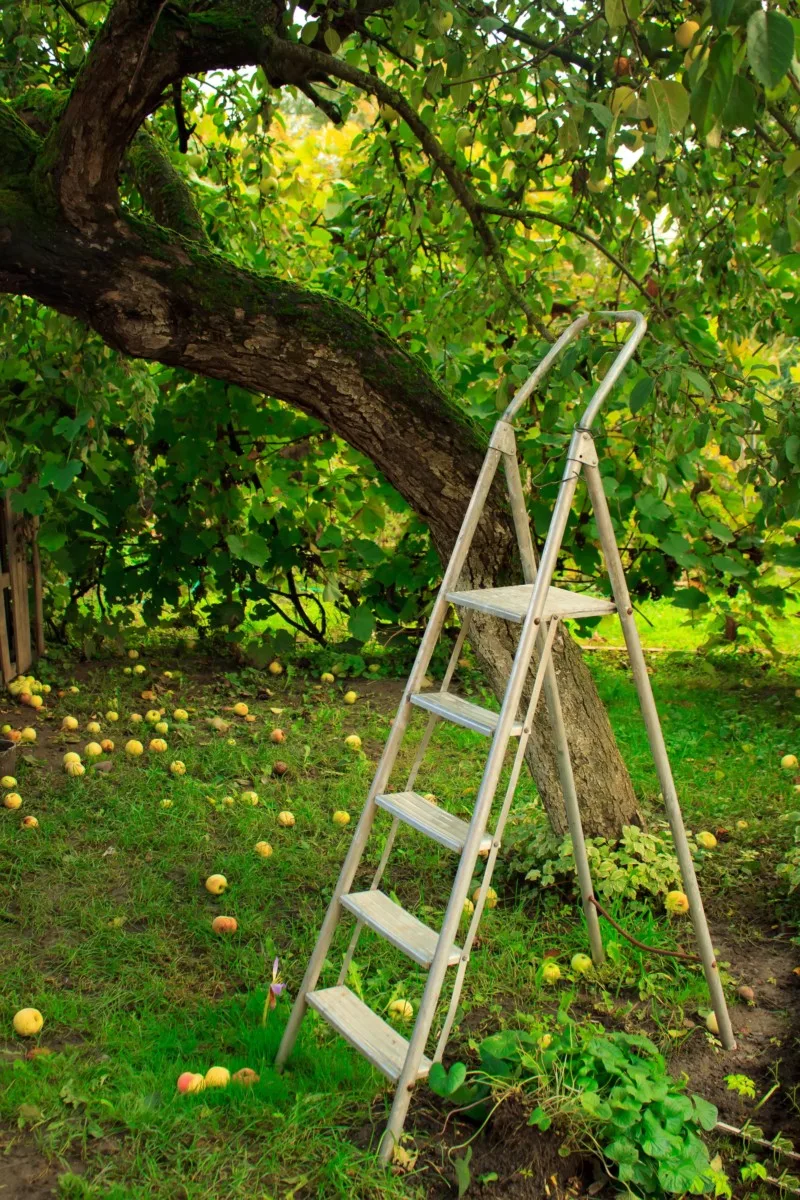
While you may not absolutely need a step ladder for harvesting fruit (or for pruning) due to the long-reach options that are available, having a good step ladder can be a good idea for a wide range of jobs around a garden or homestead.
Equipment for Processing & Preserving the Fruit
Reaching the fruits and bringing them indoors is just the start of the harvesting job. There is no point in harvesting all that fruit and then just letting it sit around and go off!
While, of course, there are plenty of fruits that you can enjoy fresh from the tree, it is likely that you will have to process and preserve your fruits in some way.
4. Large Preserving Pan
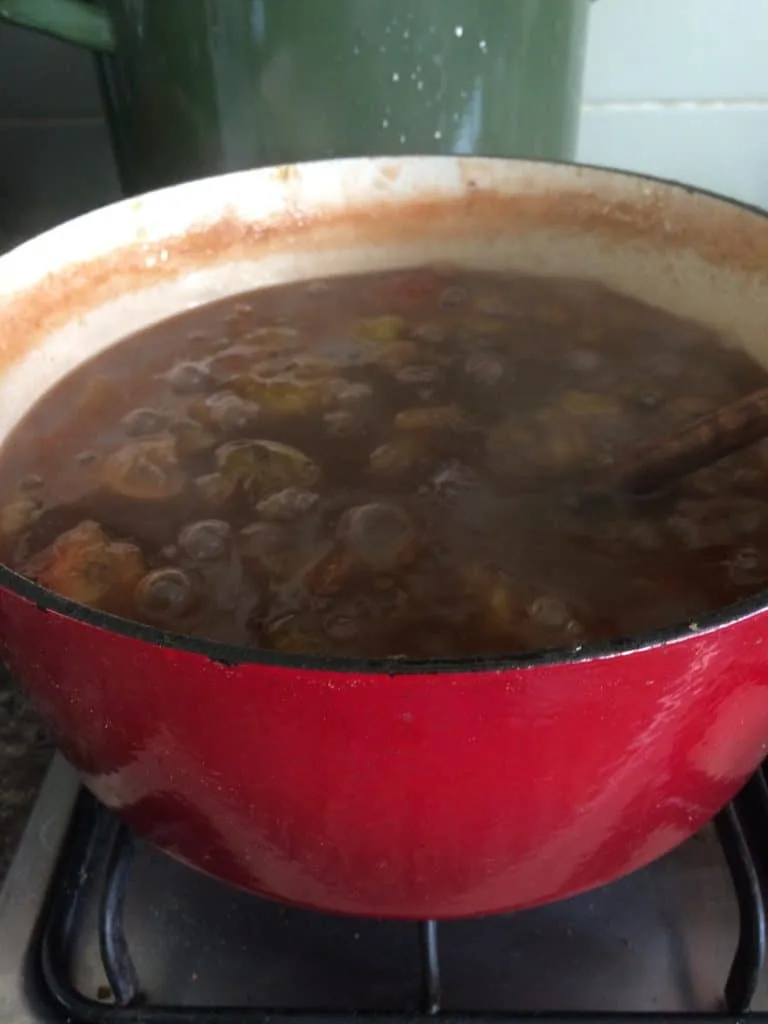
One of the great ways to preserve fruit is to make them into jams, jellies or other preserves. A large preserving pan is essential for this job. Get the right one, and it will last you for years.
Personally, I use a large enamel dutch oven that I have had for years. While Le Creuset has ruled the cast iron enamelware scene for ages, Amazon Basics makes a wonderful and economical cast iron dutch oven that has never let me down.
My pan has a lid and is also ovenproof, so it can also be used in the oven to make apple butter and other preserves. So while it is not designed specifically for jam making, it is a versatile and useful piece of equipment to help me deal with the harvest from my fruit trees.
5. Long-Handled Wooden Spoon
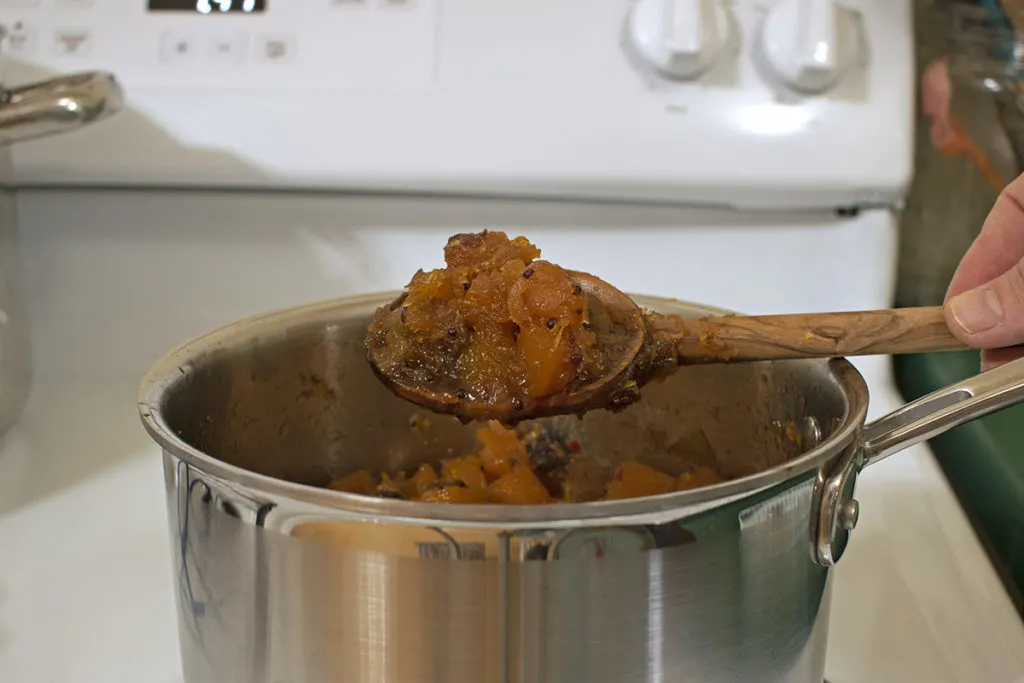
While any non-reactive spoon will do for stirring your jams and preserves, I learned the hard way about spatters on the hand while using a spoon that is too short! If you have a fruit tree, or more than one, and will be making a lot of jams and preserves, then buying a long-handled wooden spoon is a must.
Sometimes, the cheapest and simplest pieces of equipment are the most effective.
6. Canning Jars
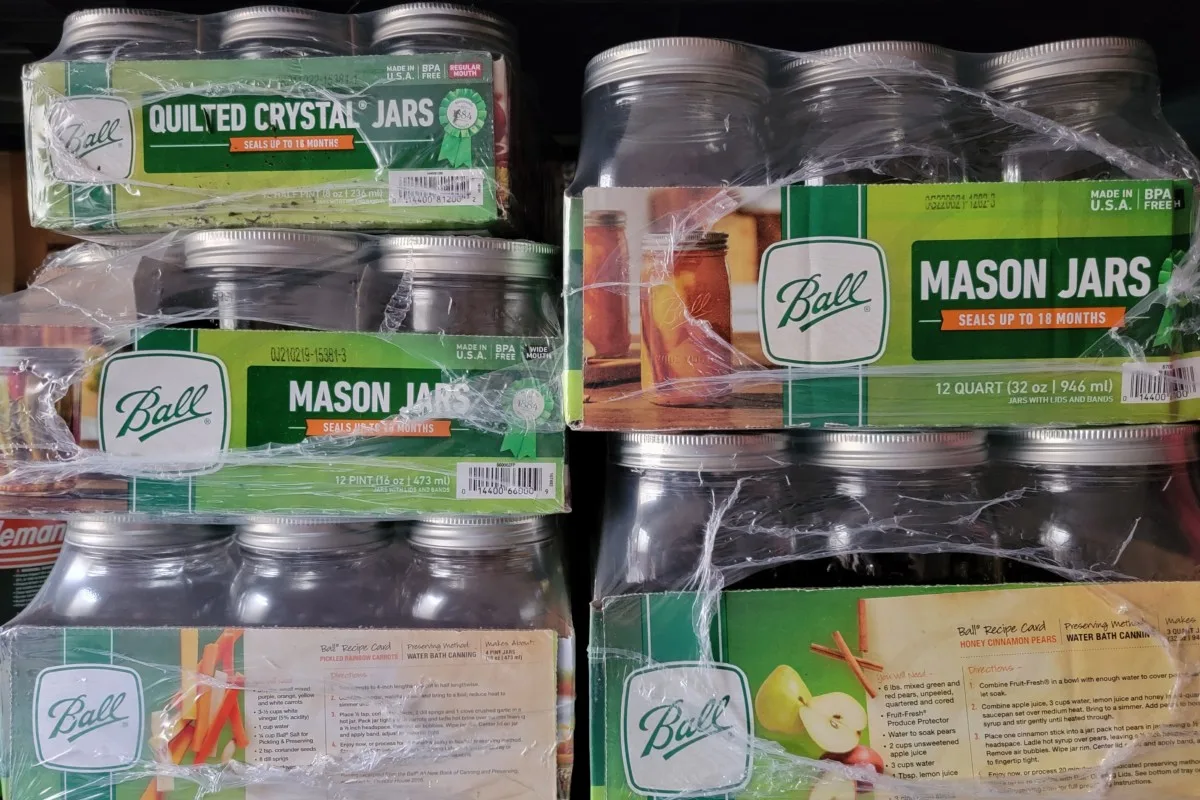
While you can simply recycle old jars to make your preserves, it is worthwhile bearing in mind that your preserves will last longer (and be safer to consume) if you use proper canning jars.
These jars have sealable lids with bands to keep preserves fresh. You can purchase new bands for these jars. There are a number of different systems to choose from, but it is important if you plan on doing a lot of canning to choose a system that is suitable for preserving the things that you wish to preserve.
While not absolutely necessary, if you are planning on doing a lot of canning of the fruits from your fruit trees, you may also like to consider investing in a hot water canner.
7. Fruit Crusher
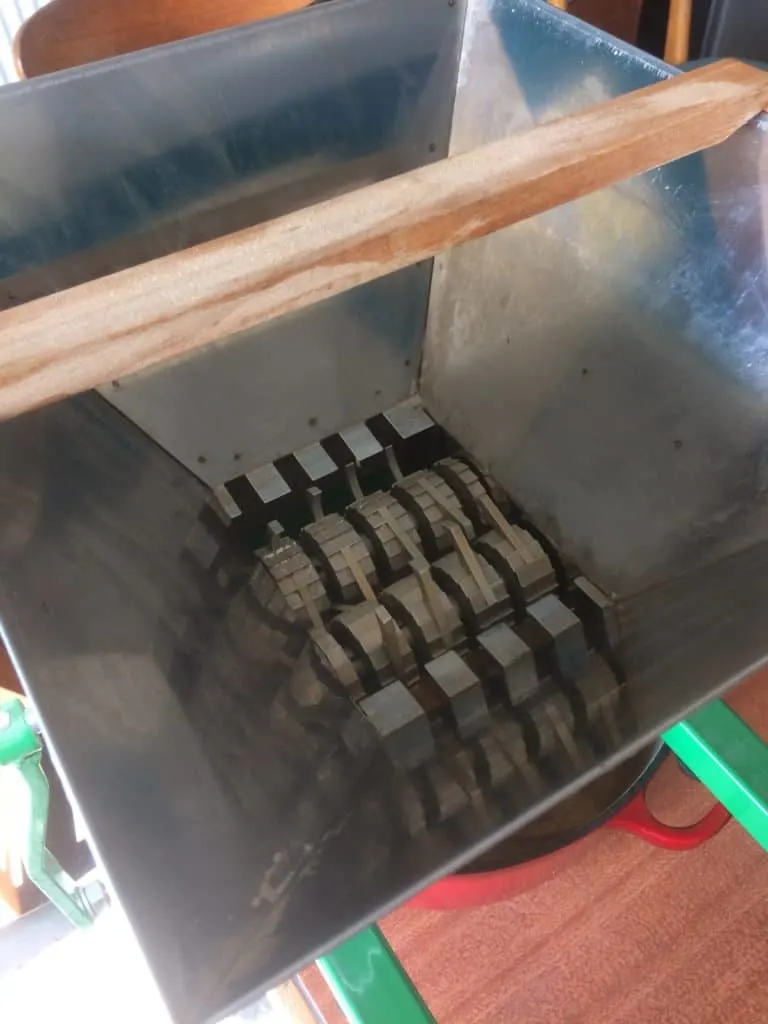
When you have a lot of apple trees or other fruit trees on your property and a lot of fruit to harvest and process, preparing the fruits can take a lot of time. If you plan on making cider from apples, for example, a manual fruit crusher can be a great investment.
For our apple harvest, this is a piece of equipment that we would not be without. It also works well for a range of other fruits – creating a pulp that can then be pressed or processed in other ways.
Chopping or crushing fruits manually without one of these can be a very time-consuming business. I have found that turning the handle on this crusher is far quicker than chopping fruits by hand with a knife.
8. Fruit Press
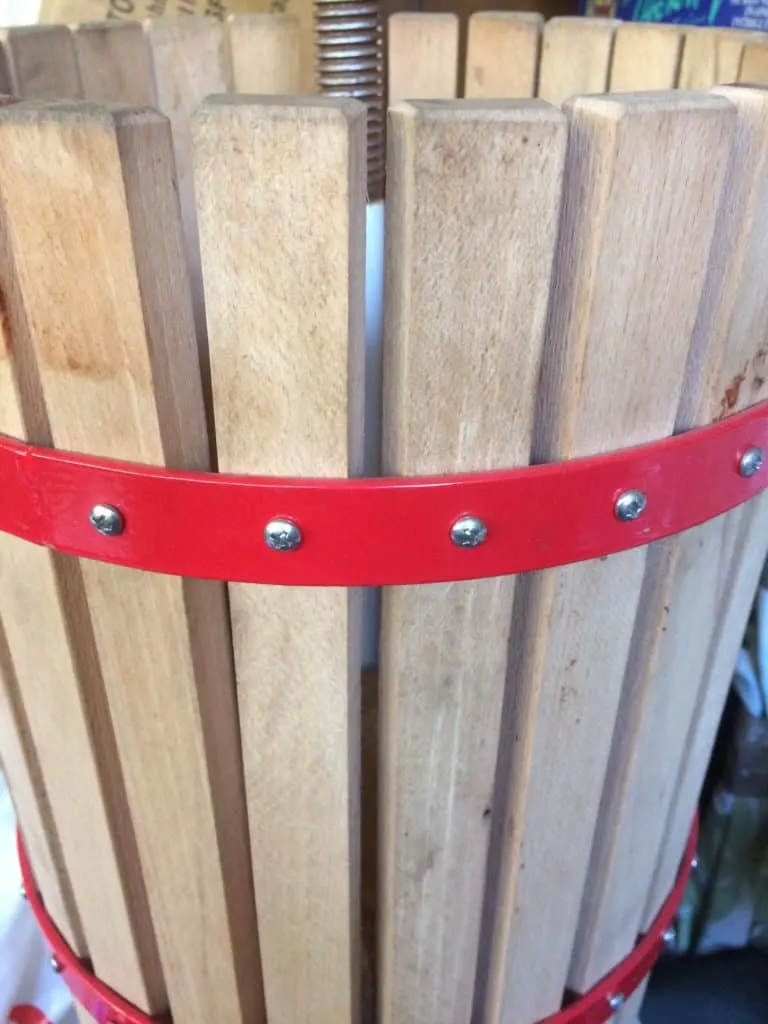
The pulp that we process using our crusher is then placed into our fruit press. This is another piece of equipment that I would highly recommend for anyone with a fruit tree. It is practically a necessity for anyone who has multiple apple trees, as we do. It allows us to quickly press our apples to make fruit juice or cider.
Since it is a mechanical process, it can be carried out without access to electricity, and large quantities of fruit can be processed without burning out the motor of a smaller electric juicer.
Pieces of Equipment for Pruning a Fruit Tree
Once all the fruit has been harvested and the fruit trees lose their leaves, it’s time to prune the apple trees. A number of other fruit trees also need to be pruned over the dormant period. The trees in our orchard are all mature trees, which we prune each winter.
We begin by removing any wood that is dead, damaged or diseased and then work to improve the shape, reduce the size and open up the canopy to make it easier for fruits to ripen up next year.
Here are the pieces of equipment that we use to prune the fruit trees on our property:
9. Pruning Shears
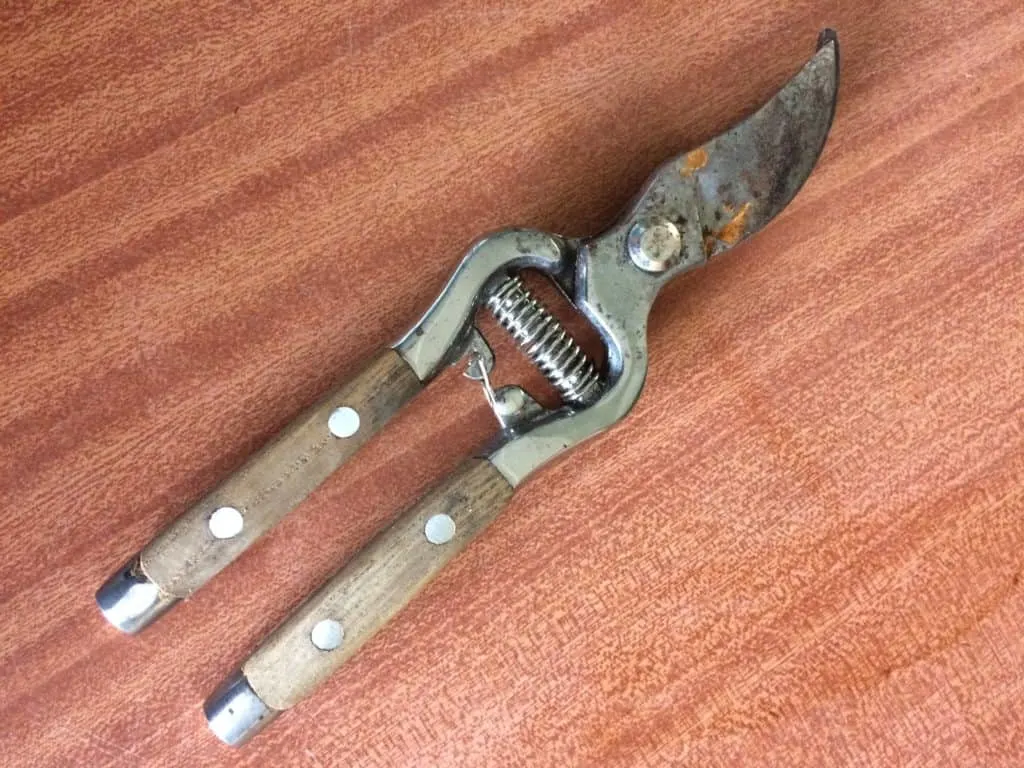
A good pair of secateurs or pruning shears are essential for almost any garden. When you have fruit trees, these are used to cut off smaller branches that may be dead, damaged or diseased and to remove small branches that are overcrowding the canopy.
Learn how to clean and sharpen them, so they last forever.
10. Pruning Saw
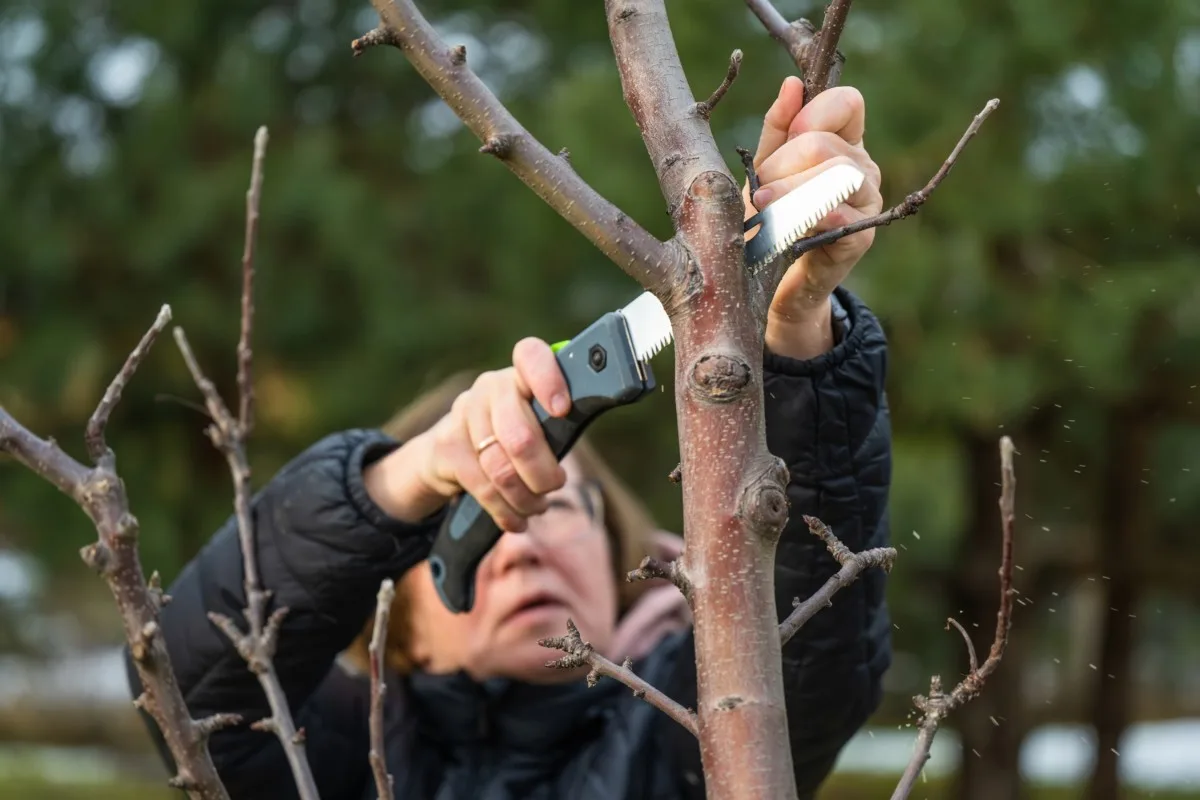
Every now and then, it will be essential to remove larger branches from your fruit trees. It will not be possible to remove these with a smaller pair of secateurs or pruning shears. For these jobs, a good quality pruning saw will be essential.
Since I am trying to reduce plastic use and aim to bring as little plastic onto our property as possible, I prefer to choose tools that have wooden handles wherever I can. Wooden-handled tools are a more eco-friendly choice and are also easier to repair than tools that have plastic handles.
11. Telescopic Tree Pruner
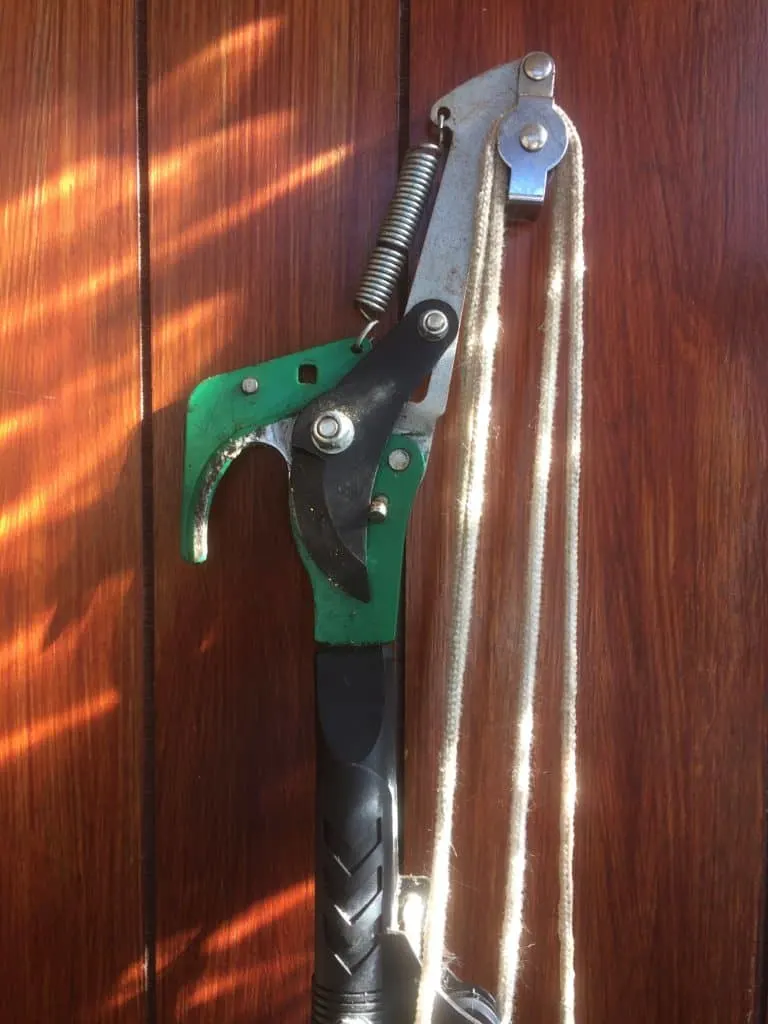
If you have large, standard fruit trees, a telescopic tree pruner could make it easier for you to prune your trees. Such a device will remove the need for a step ladder as it will allow you to reach high into the tree’s canopy to lop off or saw off higher branches.
Since I am only about 5 ft 2, reach can be a challenge! As we have a lot of mature trees on our property, I find a telescopic tree pruner to be invaluable. Without one, I would definitely find it a challenge to prune our trees without assistance.
12. Wood Chipper
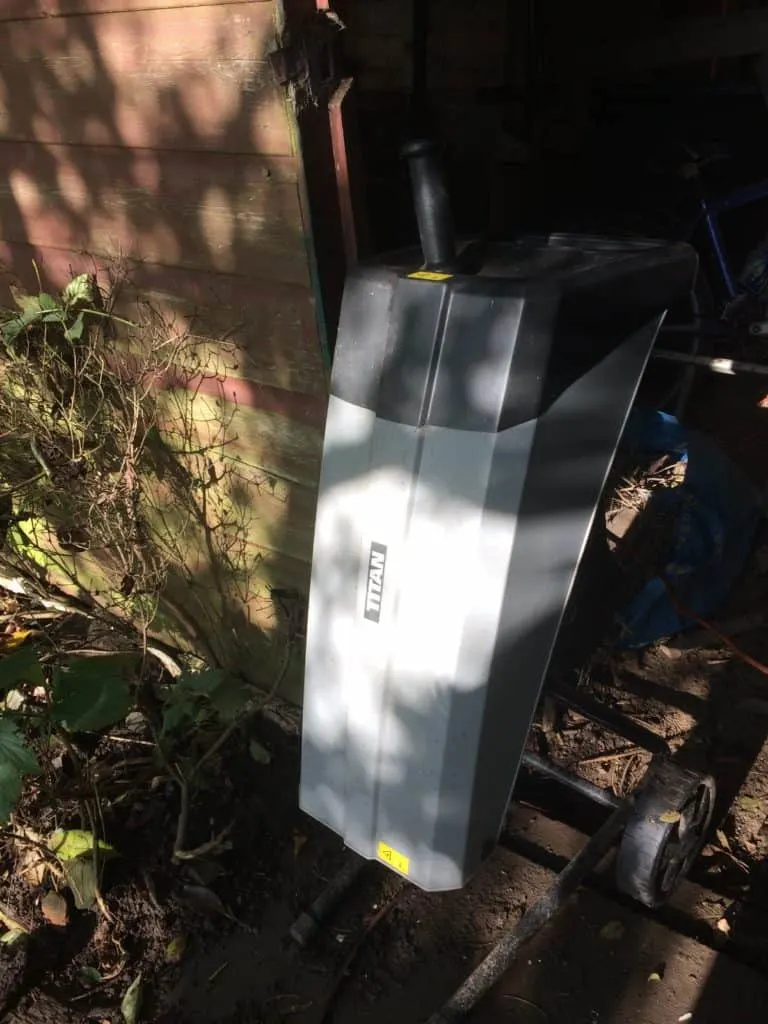
The final challenge in pruning fruit trees is deciding what to do with all the woody material that you have pruned. It’s important to make sure that this valuable material doesn’t go to waste.
We use the prunings from our apple trees (as well as the summer prunings from our cherry and plum trees) for a range of different applications. For example we:
- Use larger branches for firewood.
- Make use of branches and twigs to build up new hugelkultur beds or growing areas.
- Use branches as supports for beans and other climbing plants.
However, since we generally have quite a lot of pruned wood from our fruit trees and other trees to deal with, we have also invested in a garden wood chipper. We find this piece of equipment invaluable as it allows us to make wood chips that we use to:
- Build up hugelkultur mounds and other new growing areas.
- Add carbon-rich material to the compost heap.
- Create paths through the forest garden.
- Make natural, eco-friendly firelighters along with beeswax.
While there are, of course, plenty of other pieces of equipment those with a fruit tree could find useful, the items above are those which I would not be without on my homestead.

Get the famous Rural Sprout newsletter delivered to your inbox.
Including Sunday musings from our editor, Tracey, as well as “What’s Up Wednesday” our roundup of what’s in season and new article updates and alerts.

